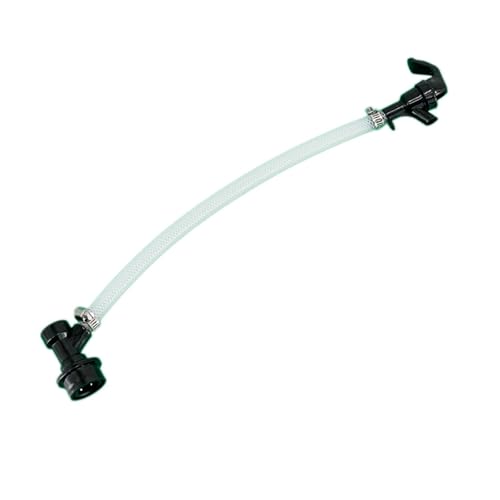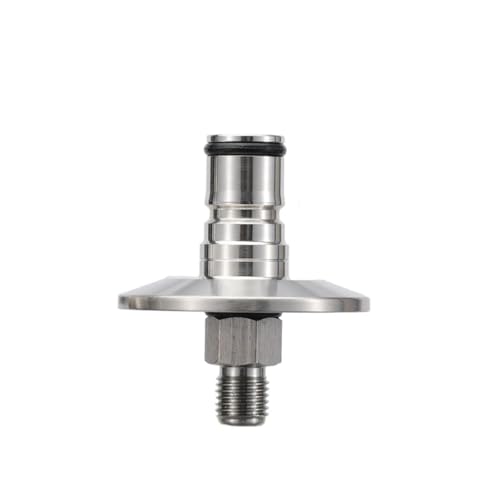...follow-up EC-1118 / CBC-1 to bottle condition a pale ale. I didn't notice flavor or performance differences after 7 days bottle conditioning...
Being cheap pays off!

Thanks for the follow-up report!

...follow-up EC-1118 / CBC-1 to bottle condition a pale ale. I didn't notice flavor or performance differences after 7 days bottle conditioning...

Just putting this idea (link) here so I can find it in the near future.





![Craft A Brew - Safale S-04 Dry Yeast - Fermentis - English Ale Dry Yeast - For English and American Ales and Hard Apple Ciders - Ingredients for Home Brewing - Beer Making Supplies - [1 Pack]](https://m.media-amazon.com/images/I/41fVGNh6JfL._SL500_.jpg)












Which is about what I paid for 5 packs of the enzyme alone. But Midwest and Northern Brewer also have them for those who want the convenience and aren't on the west coast.Currently $12 for a 5 gal pitch (and it's "one and done" because "enzymes").
and we're over in one of "convenience" related forums (e.g. extract brewing).want the convenience


Acid additions when brewing with DME/LME are rare (but I've seen them before).Used CaCl and lactic acid - dependent on your water chemistry
I got the concept from Water Knowledge. It was originally on https://sites.google.com/site/brunwater/water-knowledge, but I can't get the link to work now. Martin Brungard wrote "Water used for beers made with Malt Extract should have alkalinity under 50 ppm as CaCO3." I asked him in a HBT thread whether anything between zero and 50 is good, and he answered "Closer to zero, if you're brewing with extract."Acid additions when brewing with DME/LME are rare (but I've seen them before).
What does the lactic acid addition contribute towards a better result?
Thanks - I'll update my file. It has some of the info that I mentioned. Under Alkalinity Adjustment: "Water used for beers made with Malt Extract should have alkalinity under 50 ppm as CaCO3."@ncbrewer : https://www.brunwater.com/water-knowledge is the link at the new(er) Bru'nWater site.
Yeast Oxygen Scavenging.What does YOS mean?
I'm closing out the bottling experiments, perhaps a little early.Recipe/process for the batch in #170/#172
Authors’ Note: Way back in the Spring of 2013, we were approached to write a book titled Experimental Homebrewing that would “Out Randy” Randy Mosher and his wonderfully crazy Radical Brewing. Drew teamed up with Denny to write this book and together we quickly decided that it was a practical impossibility to achieve that goal. Instead, we pivoted to focus on the word “Experimental” and what it means. Drew was the outlandish one; Denny, the practical digger of how things worked in his brewery and for his tastes. It took us over a year and three editors to pull this book together. (Many thanks to Thom O’Hearn for dragging us across the finish line!)
Experimental Homebrewing is now approaching a decade old and is out of print, we’ve decided to bring the book online over the course of the year. Please note: you can still find used or never sold copies of the book (We’re still partial to having a physical book in hand for practical purposes!)

| Chinook/Citra Hop Steep (175F)
|
With my previous batches, I took one or two measurements at the end of the fermentation - and the hydrometer sample matched the sample from the fermenter.a reason for the difference,
which was also a "split" bottle conditioning 'experiment': some bottles conditioned using CBC-1 and some used EC-1118. This evening, I sampled a pair (not blind) side-by-side.Bitter (inspired by a Brewing Classic Styles recipe)
How would you describe the difference?which was also a "split" bottle conditioning 'experiment': some bottles conditioned using CBC-1 and some used EC-1118. This evening, I sampled a pair (not blind) side-by-side.
Using "harsh" on a scale from 0 to 5, the bottle with CBC-1 was zero, with EC-1118 was one. So not a lot of difference. Both bottles had the spice / herbal flavors typical of Golding hops.How would you describe the difference?
I've re-used the hydrometer yeast/sludge (from an S-04, 1.056 amber ale) once to ferment a gallon of apple cider, about 7 weeks ago, I think. Turned out fine. Haven't tried it again yet, but I've been fermenting some over-the-top imperial stouts lately, so I figured that yeast might be too abused or worn out, to reuse.@Hoochin'Fool : as I was cleaning the bottom my hydrometer sample tube (see #170 & 171 above), late this afternoon, I started to wonder if it would work to save that amount of yeast and re-pitch it in an upcoming batch. I didn't save the yeast (this time). Thoughts?
It will probably be a 4 to 5 weeks before sampling 1st bottles.I hope you'll post how it comes out.

| 3 lbs Golden Light DME | 3 lbs 2-row | |
| 2 lbs Sparkling Amber DME | 1.7 lbs 2-row | 94% 2-row (3 lbs + 1.7 lbs) / 5 lbs |
| 0.1 lbs munich | 2% munich | |
| 0.2 lbs cara60 | 4% cara60 |
I'll agree it's a valid option.probably be pretty danged close in flavor? I think so...
When I though briefly about blending DMEs to make this wort, I ended up at 75% "golden light" DME / 25% "pale ale" DME.Bell's own two hearted clone recipe's grist is: 74% 2-row, 22% pale, 4% caramel 40
If my custom spreadsheet is correct, it looks like a 40%/20%/40% (golden light / pale ale / amber) blend ends up really close to 74%/22%/4%.
Watching that morebeer flash brewing video, it sure looks like it's identical to their Artisan Hops Hop Shot, right down to the syringe. But the Googles says:Finding higher quality 'home brewer' centennial hop will be the next consideration.

At the moment, I'm willing to trust that MoreBeer is right in both cases:it sure looks like it's identical to their Artisan Hops Hop Shot, right down to the syringe.
There are varying opinions on what they sourced and what the produced.So, over a five-year journey, we sourced, produced, and tested the ingredients that would allow us to replicate Fresh Wort kits without the water.